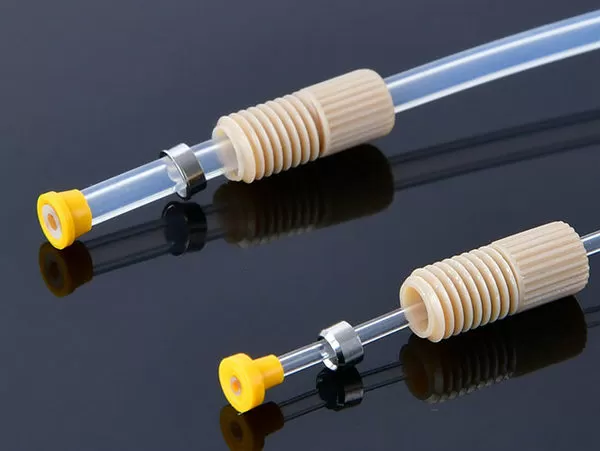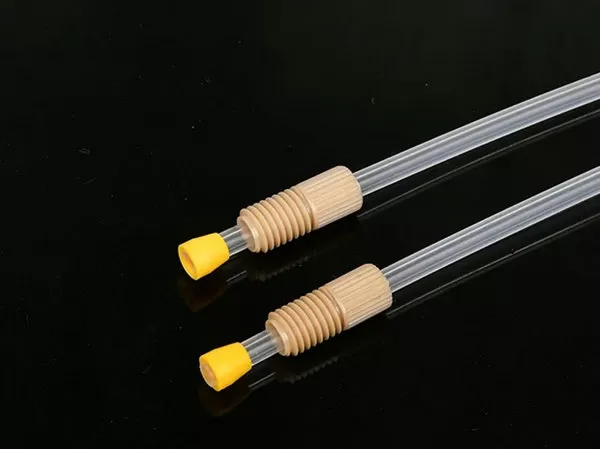




Designed for precision and strength, PEEK flangeless fittings offer superior heat resistance and chemical durability. Ideal for demanding environments, they ensure secure connections in laboratory, medical, and industrial applications, supporting the performance of critical fluid systems.

PEEK flangeless fittings are engineered to deliver reliable and secure connections in high-pressure fluid transfer systems. Manufactured from high-performance Polyether Ether Ketone (PEEK), these fittings offer exceptional chemical resistance, making them ideal for use in harsh environments such as laboratories, medical devices, and industrial applications. PEEK's inherent durability and corrosion resistance ensure long-lasting performance, even in the presence of aggressive chemicals and solvents.
These fittings are designed for use in high-performance liquid chromatography (HPLC) systems and other analytical instruments where precision and leak-free connections are crucial. Their lightweight, yet robust construction, provides easy installation and maintenance without compromising on strength or reliability. Additionally, PEEK flangeless fittings can withstand high temperatures and mechanical stresses, offering enhanced longevity and stability compared to metal or other polymer fittings.
Whether you're looking for fittings for scientific research, pharmaceutical production, or fluid handling systems, PEEK flangeless fittings are a top choice. They are highly adaptable to different tubing sizes, providing versatility across a wide range of applications, and ensuring consistent, repeatable results in demanding environments.
What is the difference between flanged and flangeless fittings?
With flangeless fittings, the ferrule basically grips the tubing as the fitting is tightened, both elements working together to make a tight and leak-free connection. With flanged tube ends, fittings are held in place on the tubing by a flange formed around a washer.
What is the difference between PEEK and stainless steel column?
PEEK and stainless steel columns have different properties that make them suitable for different applications:
Strength: Stainless steel is a strong, rigid material that can withstand a lot of stress and strain without deforming or breaking. PEEK is a tough plastic, but it is softer and less durable than stainless steel.
Temperature resistance: Stainless steel can withstand high temperatures and extreme temperature fluctuations without cracking or breaking. PEEK has a limited temperature range and can deform or melt at high temperatures.
Cost: PEEK tubing is less expensive than stainless steel tubing.
Ease of cutting: PEEK tubing is relatively inexpensive and can be easily cut in the lab. Stainless steel is difficult to cut and can leave burrs that can damage your instrument.
Pressure rating: Stainless steel tubing has higher pressure ratings than PEEK tubing.
Applications: Stainless steel is used in the pharmaceutical industry, chemical and petrochemical plants, and fuel and chemical tankers. PEEK columns are used in ion exchange chromatography (IEC) and size exclusion chromatography (SEC).